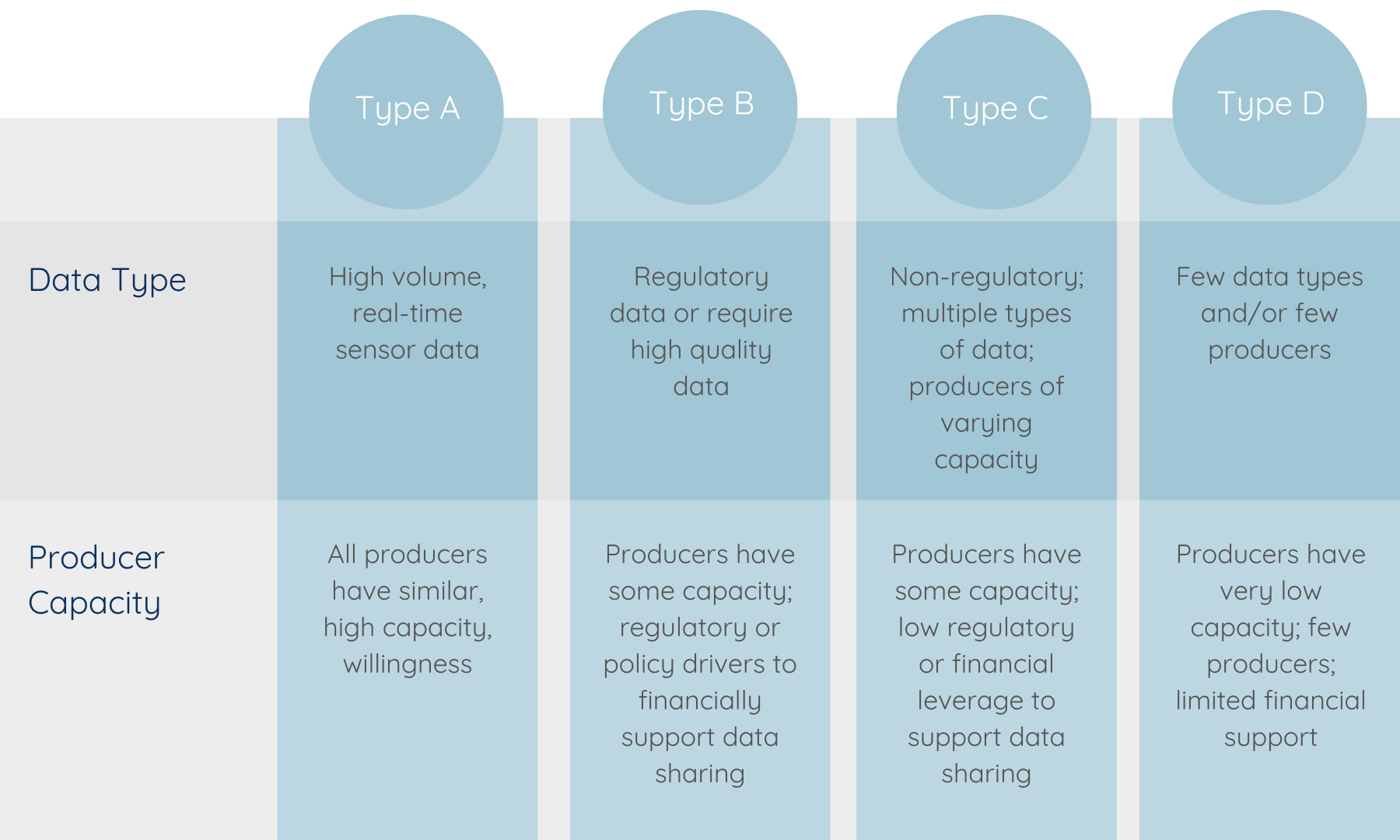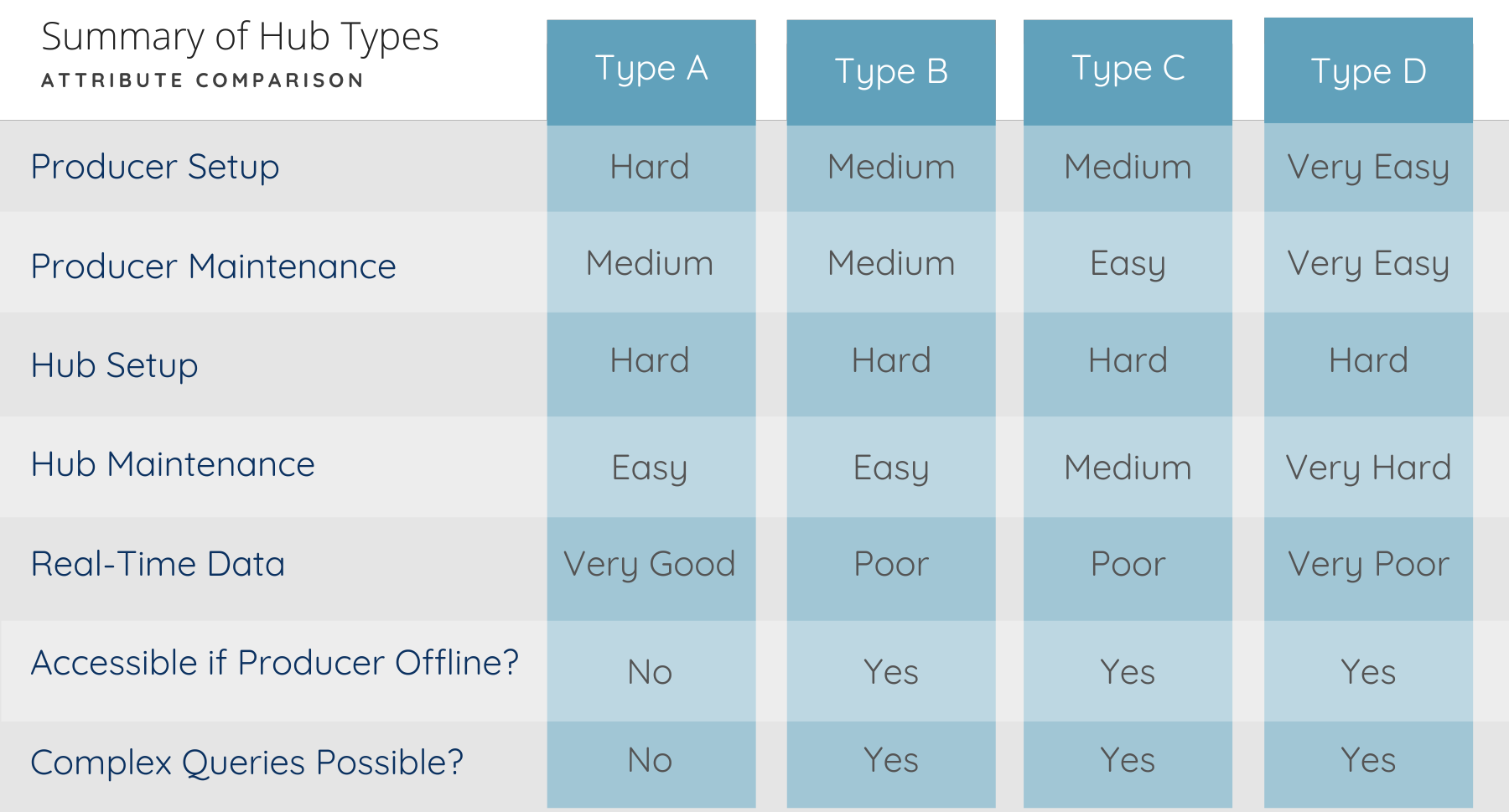
Data Hubs
IoW Data Hubs are structured sources of findable, accessible, and usable water data that conform to IoW best practices and specifications, adhere to IoW Principles, and are interconnected with other IoW Data Hubs through Geoconnex.
“IoW Data Hubs, together with the data discovery tool Geoconnex, are the underlying architecture that makes an internet of water possible.”

What is an IoW Hub?
IoW Hubs are the data architecture supporting an internet of water. There are four necessary components of an IoW Data Hub: data producers, data wrappers, a data store, and a metadata catalog.
Type A: Distributed Hub
In a distributed hub, data are collected and converted into a standardized format that is pulled into a local data store with a catalog that points to the hub’s main metadata catalog. The hub metadata catalog can search through local catalogs to pull queried data in real time.
Ideal For: managing high volumes of similar data types in real time
Advantages: low computation and storage requirements for the hub
Limitations: user query is limited
Barriers: requires significant capacity for all data producers
Examples: EPA Interoperable Watersheds Network; CUAHSI Hydroclient; WaDE 1.0
Type B: Blended, Producers Push to Hubs
Data are collected and converted into a standardized format that are pushed by the producers into a centralized data store managed by the hub.
Ideal For: regulatory data collected at a daily or higher (sub-daily) frequency
Advantages: users can make complex queries; accessible when data producers are offline; hubs can ensure data producers meet certain standards
Limitations: large computation and storage requirements for the hub
Barriers: requires producer capacity to wrap data and agreement to share data
Examples: Water Quality Portal; USGS NWIS; Reclamation Water and Information System
Type C: Blended, Hubs Pull from Producers
In Type C, data is pulled by the hub into its centralized data store, rather than pushed by local entities as in Type B. This may address some of the limitations and barriers to Type B in terms of local capacity and burden.
Ideal For: non-regulatory data collected by multiple producers with varying capacity
Advantages: users can make complex queries; accessible when data producers are offline
Limitations: large computation and storage requirements for the hub; hubs have less control on ensuring data standards
Barriers: requires producer capacity to wrap data and agreement to share data
Examples: NOAA Integrated Ocean Observing System
Type D: Centralized
Hubs pull raw data from producers and convert the data into a standardized format that is saved in their data store with a metadata catalog.
Ideal For: storing a few data types across a few producers who have low capacity
Advantages: users can make complex queries; accessible when data producers are offline
Limitations: large computation and storage requirements for the hub; hubs must have high capacity to create and maintain wrappers
Barriers: potential reservations by data producers to allow hub to standardize data
Examples: National Groundwater Monitoring Network
Which Hub is Best for You?
Different types of data may be best suited for different types of hubs.
Similarly, a producers capacity or drivers for sharing data may lend themselves to certain types of hub configurations.


IoW Hubs


Want to learn more about the IoW data architecture? Check out our blog: What is an IoW Data Hub?



